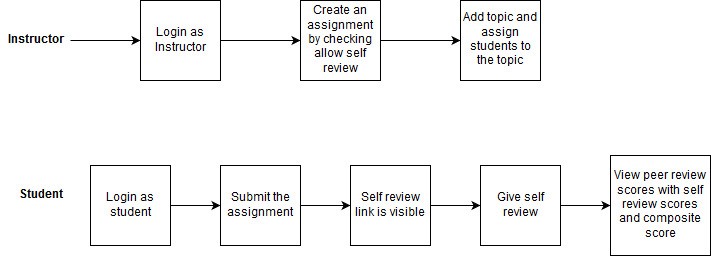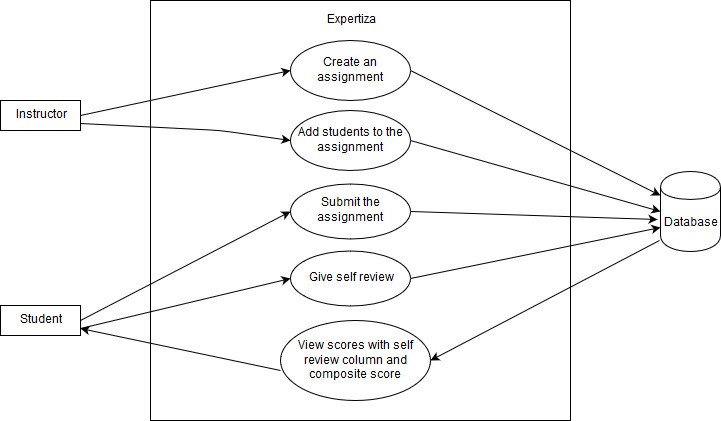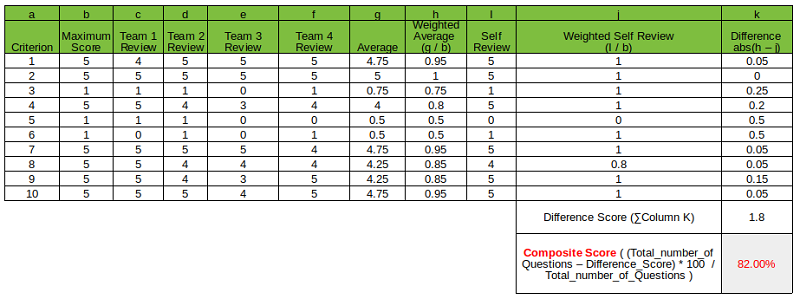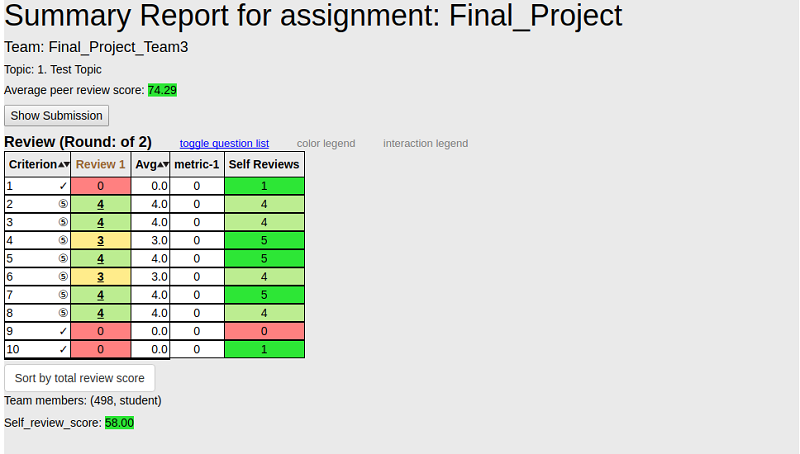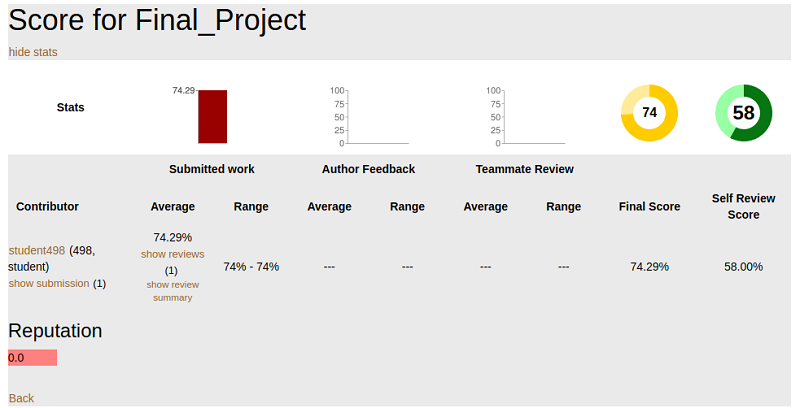E1858 Github metrics integration
Introduction
Problem Statement
Expertiza provides view submission and teammate review (under view score) functionality for each assignment. View submission provides list submission of each team for that particular assignment. We an add new to show data for each teammate Teammate reviews gauge team mates reviews on how much each team member contributed, but we would like to augment this data with data from external tools like Github (for example, number of commits, number of lines of code modified, number of lines added, number of lines deleted) from each group’s submitted repository link. This information should prove useful for differentiating the performance of team members for grading purposes. Overall data for the team, like number of committers and number of commits may also help instructors to predict which projects are likely to be merged.
Problem Definition
- 1. Implementation to see self-review scores juxtaposed with peer-review scores. Design a way to show them in the regular “View Scores” page and the alternate (heat-map) view
- 2. Implementation of the methodology to combine self-review and peer-review scores to derive a composite score
- 3. Checking if the author has submitted the self-evaluation(s) before seeing the results of their peer evaluations(already implemented).
Overall Description
It should be possible to see self-review scores juxtaposed with peer-review scores. Design a way to show them in the regular “View Scores” page and the alternate (heat-map) view. They should be shown amidst the other reviews, but in a way that highlights them as being a different kind of review.
Then implement a way to combine self-review and peer-review scores to derive a composite score. The actual formula is not as important as it is to encapsulate the formula in a method that can easily be modified if we want to change the formula. But the basic idea is that the authors get more points as their self-reviews get closer to the scores given by the peer reviewers. So the function should take as inputs the scores given by peers to a particular rubric criterion, and the score given by the author(s). The result of the formula should be displayed in a conspicuous page on the score view.
Of course, there would be no challenge in giving the same self-review scores as the peer reviewers gave if the authors could see peer-review scores before they submitted their self-reviews. So the author(s) should be required to submit their self-evaluation(s) before seeing the results of their peer evaluations.
Current Scenario
The student is able to see self-review link before submitting the assignment.
Files to be Modified
app/models/response_map.rb
app/models/vm_question_response.rb
app/models/vm_question_response_row.rb
app/views/grades/view_team.html.erb
Application Flow
Use case Diagram
Actors:
- Instructor: This actor is responsible for creating assignments and adding students to the assignment.
- Student: This actor is responsible for submitting, self-reviewing and viewing the scores.
Database:
- The database where all the data of Expertiza is getting stored.
All the other use cases are implemented except “View Scores with self-review column and composite score”
Use Case: View score with self-review column and composite score
Pre Conditions:
1.The Student should submit the assignment and self-review.
2.The other students should submit the reviews of the work submitted.
Primary Sequence:
1.The student should login.
2.The student should browse and upload the assignment.
3.The student should submit the assignment.
4.The student should submit the self-review.
5.The student should choose your scores to view the score.
6.The student should be able to see the peer-review score with the self-review scores and composite score.
Post Conditions:
1.The self-review and composite score will be visible on the page.
Database Design
1.The self-review data is getting stored in the database. This data is fetched from the database and shown in the view with the other peer-review columns.
2.The peer-review data and self-review data is fetched from the database and passed to the method. The method computes the composite score and is shown in the view.
Method to calculate the composite score
The above data is taken from the actual reviews done for the third OSS project.
1.The average has been calculated for the reviews done by the other teams.
2.The weighted average is calculated by dividing average by maximum score.
3.The weighted self-review is calculated by dividing self-review score by maximum score.
4.Difference value is calculated by subtracting weighted average and weighted self review.
5.The sum of differences of all the criteria is calculated which gives the deviation from the total of review scores(Difference score).
6.The difference between the number of questions and the Difference score gives us the composite score. And divide the composite score by the number of questions and multiply by 100 to get the final composite score.
| Range | Self Review Quality |
| <30 | Improper assessment |
| 30 to 60 | Moderate |
| 60 to 80 | Can do better |
| 80 to 100 | Perfect |
Design Pattern
1.MVC – The project is implemented in Ruby on Rails that uses MVC architecture. It separates an application’s data model, user interface, and control logic into three distinct components (model, view and controller, respectively).
2.Dry Principle – We are trying to reuse the existing functionalities in Expertiza,thus avoiding code duplication. Whenever possible, code modification based on the existing classes, controllers, or tables will be done instead of creating the new one.
Code Modifications
In app/views/grades/view_team.html.erb, we will add the html code to display one more column with the peer review columns. And the code will be added to display the composite score.
In app/models/vm_question_response.rb, we will add the method to calculate the composite score.
In app/models/response_map.rb, we will be including the self review logic in the condition statement mainly checking for the type of response map.
In app/models/vm_question_response_row.rb, we will be including the method to calculate the weighted average, which is used to calculate the overall composite score.
Implementation
The last column has the self review scores. The composite score is calculated and is displayed at the bottom of the table.
The composite score is displayed beside the average peer review score.
Test Cases
| Test case ID | Test Objective | PreConditions | Steps | Test Data | Expected Result | Post Conditions |
| E1799_Test_Case_1 | Successfully displaying self review scores in the heat map view | 1. The student should do the self review.
2. The scores of the self review should be present in the database. |
1. Login to the Expertiza Application.
2. Submit the assignment created by the instructor by browsing it. 3. Choose the self review option and complete the self review. 4. Go to view scores option. |
Submit the relevant assignment before doing the self review. | The self review column is displayed together with the other peer reviews in the end. | The student is able to see the self review column. |
| E1799_Test_Case_2 | Successfully calculating the proper composite score. | 1. The student should do the self review.
2. The score of the self review should be present in the database. 3. The function is implemented to calculate the composite score using average of the peer reviews and the self review. |
1. Login to the Expertiza Application.
2. Submit the assignment created by the instructor by browsing it. 3. Choose the self review option and complete the self review. 4. Go to view scores option. |
Submit the relevant assignment before doing the self review. | The composite score is returned by the method. | The method is able to return the expected composite score. |
| E1799_Test_Case_3 | Successfully displaying of composite score in the heat map view. | 1. The student should do the self review.
2. The scores of the self review should be present in the database. |
1. Login to the Expertiza Application.
2. Submit the assignment created by the instructor by browsing it. 3. Choose the self review option and complete the self review. 4. Go to view scores option. |
Submit the relevant assignment before doing the self review. | The composite score is displayed in the heat map view. | The student is able to see the composite score. |
| E1799_Test_Case_4 | Successfully displaying of composite score in alternate view. | 1. The student should do the self review.
2. The scores of the self review should be present in the database. |
1. Login to the Expertiza Application.
2. Submit the assignment created by the instructor by browsing it. 3. Choose the self review option and complete the self review. 4. Go to alternate scores option. |
Submit the relevant assignment before doing the self review. | The composite score is displayed in the alternate scores view. | The student is able to see the composite score. |
